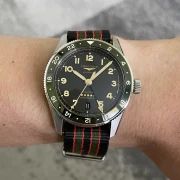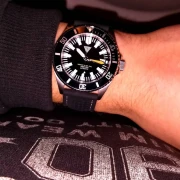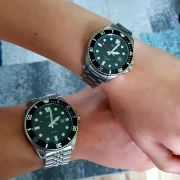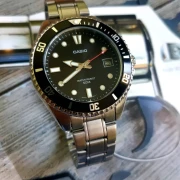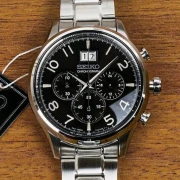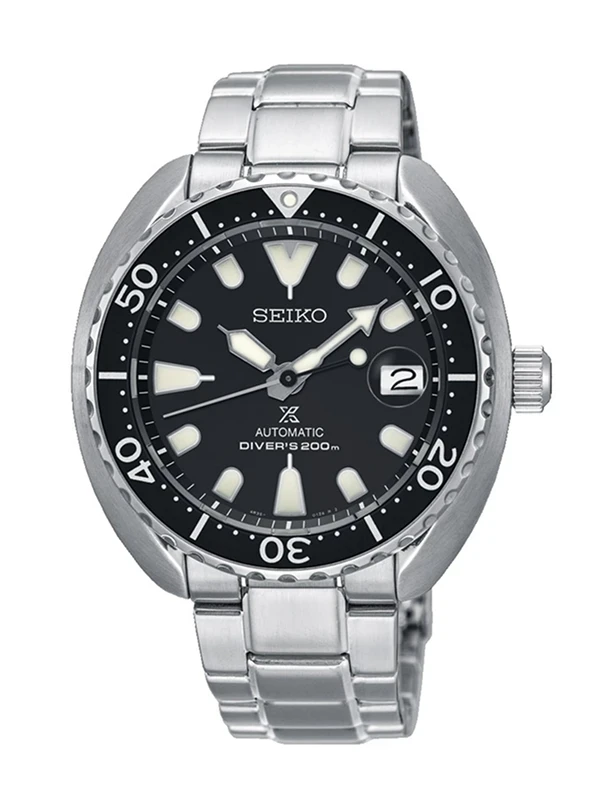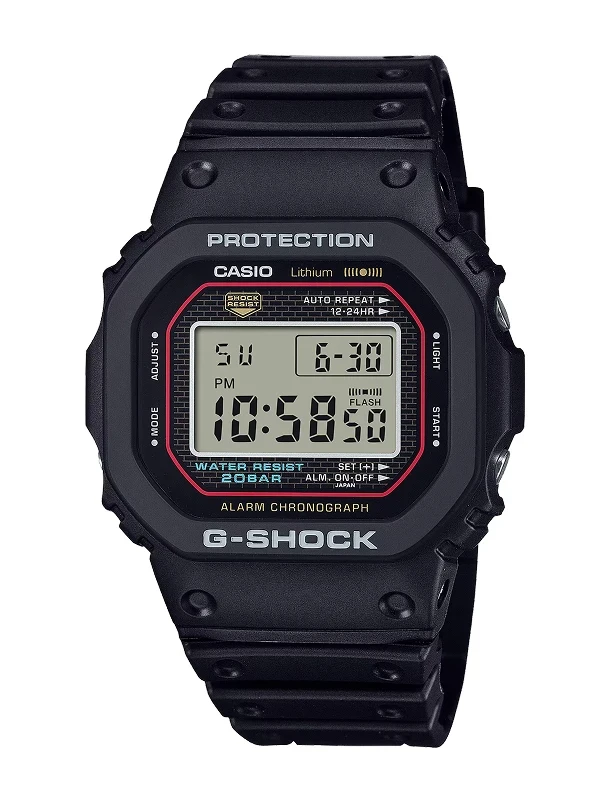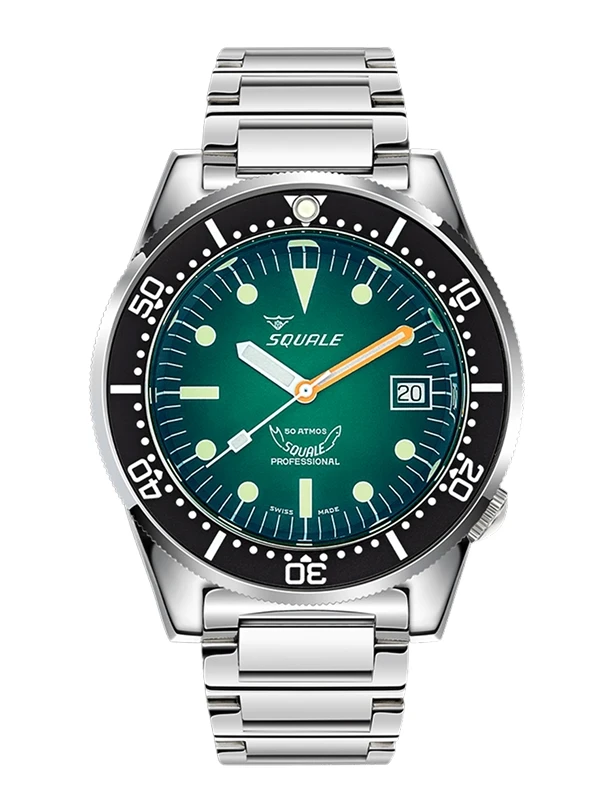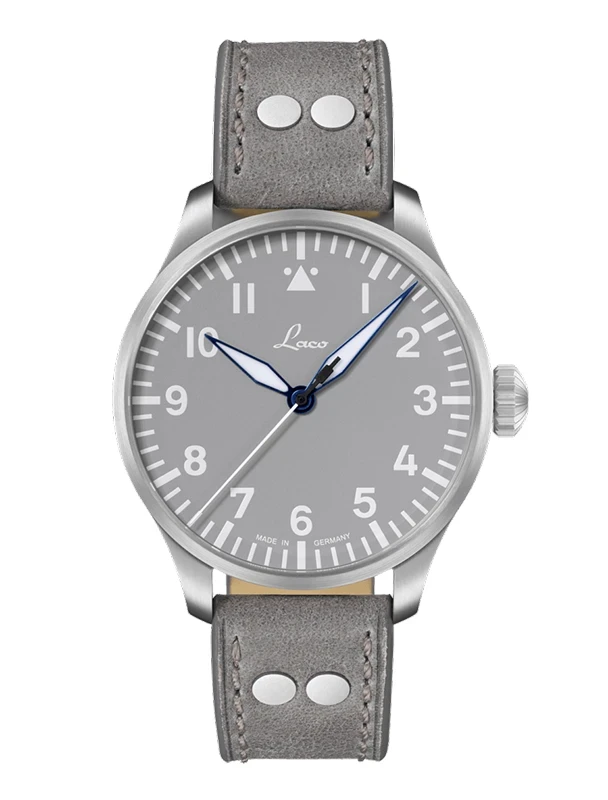Urszuly Patrik
@Patrik2
Budget watch collector always on the hunt for pre owned bargains.
Read morechronoshots
Have collection
Want collection
Had collection
Reviews
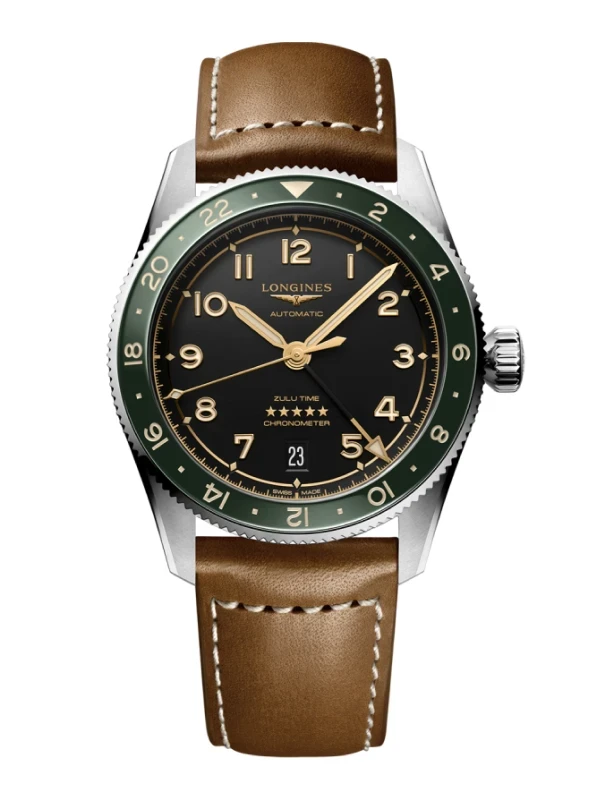
The Longines Spirit Zulu Time GMT.
Straight off the bat, let me warn you that this incredible wristwatch was brought to me by the goddess Fortuna herself. I’d like to think that is because she has a crush on me and would like to take my pants off, but what is certain is that I did not buy this watch. In fact, I didn’t even dream about owning this watch, as it was never on my radar and never within my budget, but I own it anyway, because life can be very weird sometimes—meaning that every once in a while, it stops being a joy-sucking bitch of a vampire and instead gives you something you never even dreamed to dream about.
Long story short, I won this watch at a giveaway. In fact, the giveaway was organized by the lovely people who created and own this website, on which you are reading my weird review while debating whether or not you should close the screen and do something useful, instead of reading some moron’s never-ending introduction to his personal relationship with this watch, which no one asked for.
Now that that is out of the way, let me create the picture of what you can expect from this review. I will (in a very conventional manner) start by stating the positives of this product, and give you reasons why you should look forward to owning it. In the second part, I will state the negatives, and tell you why you may not want to look forward to owning this watch. None of this really matters, of course, because you already made your mind up about buying (that is obvious from the fact that you’re still reading, even though there has yet to appear any useful information from my part), so you’re just trying to justify your concrete-hard conviction that you indeed are in need of this gorgeous Longines.
Let us begin the justification!
THE POSITIVES
Alright. Let’s start at the obvious point: this watch is beautiful. If you’ve only seen images and videos of the watch and you already think it’s good-looking, let me tell you, you are in for a treat. Because if I had to make a stupid comparison for the shocking difference in the appearance of this watch in real life and in video, I would probably try to emphasize it by mentioning those YouTube videos where random barber dudes take homeless people off the street and do a full makeover on them—for views and clicks, of course. The contrast is about as strong as the contrast between a 6-foot-long beard-wearing, wild bush-hair-having, 4-month-old stench-rocking unfortunate homeless soul and a freshly groomed golden child from a rich family wearing a full tuxedo for one of those tacky rich-people parties. That a clear enough explanation?
The deep green bezel, gorgeous golden indices and hands, the small but noticeable details on the dial, the big and beautiful unprotected crown, and the case finish are all incredible and wonderful. Not like Mr. Wonderful, of course. That man is a wanker.
So, the watch looks awesome. What else? Well, the proportions. They are perfect. I could end this bit here, but you and I both know that I am incapable of ending something with so few characters, so let me elaborate.
The 39 mm case is a true 39, because the whole case profile is thin. There is no fat crown guard or outward-stretching lugs. The whole case is sized just well, and it’s executed in a very elegant way.
The thickness of 13.5 mm is a big ol’ lie, because the midcase is very thin, the case back is very flat, and the crystal is pretty domed, so the watch wears a lot more like a 12 mm piece.
The lug-to-lug at 46.7 may sound scary to the smaller-wristed out there, but I believe it is fine, and the relatively long lugs add a ton of charm to the design of this watch.
Okay, so it looks awesome, it wears great, what else? Well, it works great also!
Inside the case is a Longines L844.4 movement, and I have no idea if it’s in-house or not, and honestly I don’t really care. What I care about, though, is that it is a chronometer-certified movement, meaning its tolerances are -4 to +6 seconds a day. Furthermore, it is a self-winding mechanical movement beating at 25,200 vibrations per hour, with a monocrystalline silicon balance spring and power reserve up to 72 hours. Now that is the good stuff right there.
THE NEGATIVES
I’m afraid we’ve reached the part where I have to crap on the watch a little bit, but that is okay as nothing is or can be perfect. I must state, though, that because this watch came to me like a dream or a sudden idea comes to people (meaning it cost me nada), the following negatives don’t bother me as much. But if I try to put myself in the shoes of the poor bastard who actually has to pay money to own a really great watch, I feel like the negatives may distract me a little bit—perhaps even set me on a new course, looking for a new watch.
First of all, the bracelet. Now, I feel really strongly that this watch does not belong on a bracelet, and as a result, it looks weird on one—but that’s subjective. What is not subjective, however, is the fact that the 21 mm lug width is stupid and annoying and unnecessary, and getting straps is hard as a consequence. Also, the male end links are a very bad idea on an otherwise very well-proportioned and elegant watch, especially when the already long lug-to-lug length is taken into consideration. The quick-release mechanism, activated by the push of a button, is cool and all, but that doesn’t mean that Longines can be forgiven for cheaping out and offering this watch without on-the-fly adjustability on the bracelet. The tapering and the quality feel of the bracelet is otherwise pretty good.
Besides the bracelet, that really feels like an afterthought, there is another (and last) issue, and that is the shocking fact that, on my watch at least, the bezel is painfully misaligned. And I’m serious about this one. This is not the OCD talking out of some weird watch-nerd junkie that demands perfect alignment even viewed under a microscope. This is some proper F-ing up on Longines’ part. There is almost a whole millimeter between the triangle at 12 and where it should be (exactly at the 12 marker on the chapter ring), and that is pretty close to being outrageous even with a 400 EUR Seiko—let alone an over-3-grand Longines.
I was really surprised by this, because I thought that Longines’ competing advantage is their attention to detail besides value for money, so I did not expect a misaligned bezel. My advice is: if you’re looking to buy this watch (either new or pre-owned), make sure to check it out personally before purchase, so you can avoid misaligned mishaps. Unless you are not bothered by misaligned bezels on watches, of course, in which case you are probably a psychopath and not to be messed around with.
And there we go, my two-page-long review of the Longines Spirit Zulu Time 39 (in green) is finally over! I hope you managed to convince yourself, because I want you to experience this awesome watch too. I would definitely recommend it! Just keep in mind, the bracelet is not that good. The watch looks better on NATO anyway, so it's no biggie.

The Vertigo Diver One was my very first serious automatic wristwatch, so it is a tad sentimental for me—but I won’t go easy on it.
Vertigo is an Italian microbrand. They make some cool and originally designed watches, and they utterly and completely fly under the radar. Underrated would be an understatement.
The Diver One is a beautifully designed tool watch—and a proper tool watch indeed (well, not really, but I’ll get to that shortly). It reminds me of the Tudor Pelagos, Sinn divers, Seiko divers, the Squale 1521, the Omega Planet Ocean, and of course the Rolex Submariner all at once.
There are many shortcomings, however, mainly the sizing of this one.
This is a chunky boy—it very obviously gave up on exercise and healthy eating a long time ago. All that pizza, cannoli, olive oil, and pasta really had a crushing effect on its thinness, making it at least 14 mm thick (but it feels more like 15 or even 16 mm on a bad day).
The diameter is 42 mm and the lug-to-lug is 49 mm, and that could be forgiven—but unfortunately, the wearing experience is completely ruined (for me, at least) by the 22 mm stainless steel bracelet that completely forgot to taper even a little bit, making the watch appear larger than necessary and way, way too heavy—almost 200 grams sized up for my 7-inch wrist. The bracelet is nice otherwise, full links, endlinks and a milled clasp, but the lack of taper puts a bullet in every each one of those points.
The bezel is a 120-click unidirectional stainless steel one with reassuring bezel action but without correct alignment. Like a Seiko.
The movement is also just like a Seiko because it is the NH-35. Not much to say about that—it is adequate.
The dial is printed, so no applied indices here, but the printing is nice and the looks are very cool, very macho, very tool-tastic. Lovely.
What is not so lovely, however, is the lume, because it is almost non-existent. It won’t last for five minutes, let alone the night, which is a shame—as a tool watch can’t be a tool watch without proper lume.
The dial is protected by a flat piece of sapphire, big plus point for that.
The claimed water resistance is 300 meters. Everything screws down, and the watch has a very quality, reassuring feel (perhaps due only to the heft, but I think otherwise), so I honestly believe that claim.
When I purchased this one, my thinking was the following:
“I want a proper automatic diver with lots of water resistance, sapphire, and for the best price. All Seiko, Citizen, and Orient divers specced similarly are way more expensive than the Vertigo. Therefore, I’ll buy the Vertigo.”
I quickly realised, however, that this watch was too big and hefty for me, and that I would have been better off with an Orient without sapphire for less money, or a Citizen with sapphire for more—so I can’t wholeheartedly recommend this watch.
It now belongs to my dad, and he really likes it, so much so that he wears it every single day. And my dad is a lot cooler guy than I am, so perhaps my complaints are all due to being a softy.
Anyway, I think this one is worth a shot if you like microbrands and big divers—but I would look for a pre-owned or just generally discounted model for the best value-for-money experience.
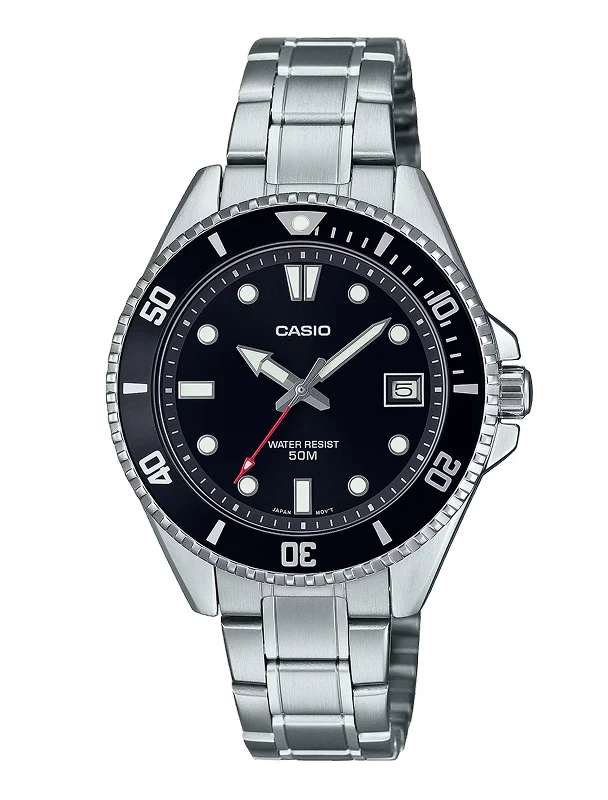
For those of you who are looking to get the Baby Duro because of your desire for a smaller dive-style watch, I suggest you be very careful. Let me elaborate.
I purchased the Baby Duro from Casio because, like many others, I really liked the looks and functionality of the Duro, but I was afraid of the ginormous 44 mm case size. Ironically, I now wear the full-size Duro very happily, and my Baby Duro decorates the wrist of my little sister.
I watched the YouTube reviews of the new Mini Duro, so I knew all about the decreases in quality compared to the OG Duro—meaning crappy bezel, 50 m water resistance due to lack of screw-in crown and caseback—but I bought it anyway, partly because it was on special (and how could I resist a special?) and partly because I wanted a small, black, dive-watch-looking watch.
As soon as I took the wrapper off and opened the cardboard shipping box with my very cool and “tacticool” Spyderco Tenacious folding knife, I knew that this Casio was going to be too small—way too small, unfortunately.
“Well duh, what a surprise, Sherlock. You should have known that from the get-go, it is 36 mm after all!”
Yes, you are right, but 36 mm doesn’t automatically translate into “too small,” not for me at least.
The reason why this watch is too small and belongs only on children’s or females’ wrists (and I say that with a very firm stance against sexism) is because of the width between the lugs.
This watch is supplied on either a metal or rubber strap; both are 15 mm wide between the lugs, so the strap is very thin and feminine. Combine that with a very—and I mean very—short lug-to-lug distance, and you get a watch that looks comically small even on a small-to-average male wrist, but looks incredibly cool howewer on a small-to-large female or child wrist.
It is no surprise, then, that my Baby Duro’s fate was to be gifted to a female child—my lovely sister—who now, as a consequence, has the coolest watch in her class and looks like a sharply dressed and accessorised businesswoman in a group of 10–11 year old kids who probably still forget to wipe their noses every once in a while.
With all the negatives being mentioned and duly noted, for fairness’ sake I also have to mention that this watch still is very cool. The looks are great, the lume is functional in the applied indices, the hands are nicely polished, the sunray effect on the dial is lovely, and the seconds hand hits the markers perfectly—on my model, at least.
The bracelet is low quality but easy to size and very comfortable, and altogether the whole piece has the desirable appearance of a luxury sports watch.
Cool, very cool Casio. But I’m still mad at you for not making a proper diver Duro in 38 or 39 mm instead. Shame on you.
